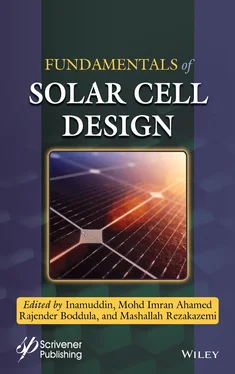1 ...7 8 9 11 12 13 ...28 
Figure 1.18 Fused nine membered ring - fluorodicyanoindenone.
Zhuping Fei et al. synthesized low band gap non-fullerene acceptor small molecule, C8-ITIC ( Figure 1.19) [16]. Acceptor molecule has seven contiguously fused rings flanked on either side by indacenodicyano electron withdrawing group and carries four n-octyl alkylchains. Authors employed two donors like (i) PBDB-T polymer and (ii) PFBDB-T polymer. Solar cell devices were fabricated by adopting given configuration: ITO/In 2O 2/ZnO/active layer/MoO 3/Ag. Impressive PV parameters were obtained with conversion efficiency of 13.2% using C8-ITIC and PFBDB-T blend. The energy loss noted in the solar cell device is less than 0.56 eV. Non-fluorinated polymer PBDB-T with C8_ITIC blend recorded lower efficiency. Authors claim that polymer backbone selective fluorination is another important factor to achieve higher conversion efficiencies in organic solar cell devices.
Jianfei Qu et al. synthesized four A-D-A–type non-fullerene small molecule [17] acceptors. Alkyl groups C 2, C 4, C 6, and C 8were selected and were attached to the rhodanine end group having ring Nitrogen ( Figure 1.20). Alkyl groups attached did not have much effect on their absorption properties. But these alkyl groups played a role on the film properties like, crystalinity, molecular packing, manifesting on the PV parameters. PBDB-T polymer was chosen as donor along with one of the acceptors synthesized as a blend material. PV measurements were determined with an inverted device structure: ITO/ZnO/active layer/MoO 3/Ag. PBDB-T polymer donor with C6 small-molecule acceptor blend gave an excellent efficiency of 8.26% PCE. Furthermore, introducing thermal annealing with iodooctane solvent improved the efficiency to 9.29%. Other PV parameters observed were also good: Voc = 0.89V; Jsc = 15.80 mA/cm 2; and FF = 58.12%. Investigations reported in this work indicated that effect of alkyl chain length has a pivotal role in tuning the PV parameters, in making suitable films.
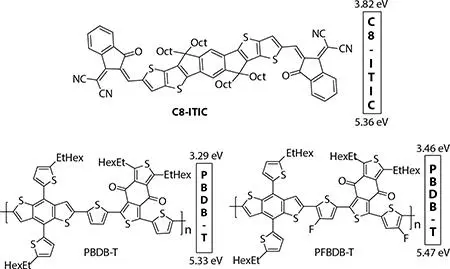
Figure 1.19 Fused seven membered ring - dicyanoindenone.
Kaili Wang et al. synthesized calamatic shaped A-D-A–type nonfullerene small-molecule acceptors, CPDT-4Cl and CPDT-4F ( Figure 1.21), by varying chloro and fluoro substituents [18]. CPDT-4Cl and CPDT-4F exhibited absorptions extending in to 900-nm region. PBDB-T was employed as a polymer donor and its light absorption has complementarity with the two CPDT-4Cl and CPDT-4F acceptor molecules and the blend absorption of these (PBDB-T and CPDT-4Cl, and PBDB-T and CPDT-4F) cover 400- to 980-nm region. PV parameters were evaluated by adopting conventional device structure like: ITO/PEDOT-PSS/[PBDBT+Acceptor]/Phen-NaDPO/Ag having 9.47% efficiency for CPDT-4Cl and 9.26% efficiency for CPDT-4F, respectively. Other parameter like Jsc was found to be impressive like 21.3 mA/cm 2for [CPDT-4Cl + PBDB-T] blend and 20.1 mA/cm 2for [CPDT-4F + PBDB-T] blend. Authors express that the non-fullerene–type acceptors with NIR absorption have great scope to improve the organic solar cell efficiency.

Figure 1.20 Fused seven membered ring acceptors with variation in N-alkyl chain length.
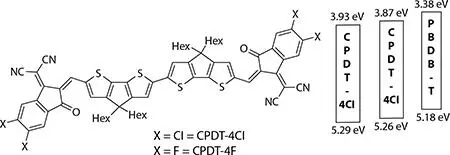
Figure 1.21 Calamatic shaped non-fullerene small-molecule acceptors.
Eun Yi Ko et al. synthesized small acceptor molecules [19] containing dicyanovinylene (DCV 2) and tricycanovinylene (TCV 2) groups ( Figure 1.22) as strong electron accepting moieties. Material properties were determined for IDT(DCV) 2, IDT(TCV) 2, and IDTT(TCV) 2( Figure 1.22) and PTB7-Th polymer used as donor to evaluate PV parameters with an inverted cell structure like ITO/Zno/PTB7-Th+Small Molecule/MoO 3/ Ag. Reasonably good efficiency (2.8% to ~4%) was observed for all the prepared small acceptor molecules. Interestingly, these fabricated devices exhibited relatively high Jsc values as 11.02 to 11.98 mA/cm 2. Thus, fabricated devices were stored in dark without encapsulation for about 1000 h and the device stability was monitored by recording absorption spectrum. The devices were found to be stable to oxygen, moisture, and carbondioxide for over a period of 1,000 hours indicating excellent shelf stability.
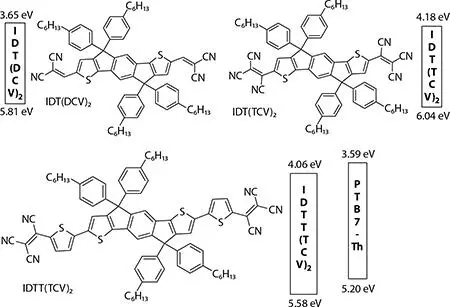
Figure 1.22 Dicyano and tricyano vinylene–based non-fullerene small-molecule acceptors.
Yamin Zhang et al. synthesized [20] non-fullerene acceptor smallmolecule F-2Cl by chlorination of parent molecule ( Figure 1.23). PBDB-T polymer donor was difluorinated to make PM6 with changed HOMO and LUMO values. F-2Cl has absorption covering the range of 500 to 800 nm and PM6 has absorption covering the region of 400 to 680 nm with complementarity covering wide absorption range. The conventional solar device structure using F-2Cl as acceptor and PM6 as donor with a solar cell film thickness of 103 nm provided very good efficiency of 12.59% PCE with Voc of 0.94 V; Jsc of 17.96 mA/cm 2; and FF of 77%. The total solar cell film thickness was changed to 600 nm by improving the active blend layer to get solar cell parameters like, Voc of 0.879 V; Jsc of 19.61 mA/cm 2; FF of 58%; and solar cell efficiency of 10.05%. Authors mentioned that there are some changes leading to decrease the solar cell parameters, but the efficiency of 10.05% is remarkable considering the active layer blend thickness of 600 nm. Authors explained that the morphology of the thick film (600 nm thickness) played key role in the observed efficiency.
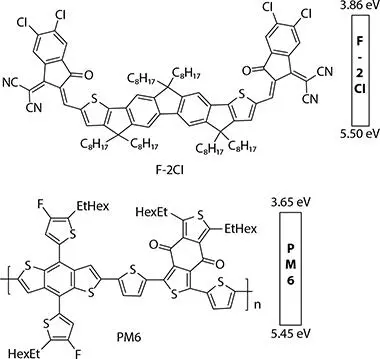
Figure 1.23 Dichloro-dicyano-indocinyl based small-molecule acceptors.
Yanbo Wang et al . synthesized [21] seven rings fused contiguously with either sides carrying halo-dicyanoindacenyl group ( Figure 1.24) compounds F-H, F-F, F-Cl, and F-Bras non-fullerene small-molecule acceptors. PBDB-T polymer was used as donor in these investigations. A change in energy levels (HOMO and LUMO; Figure 1.24) of three compounds ( F-F, F-Cl, and F-Br) carrying halogen was evident upon substituting hydrogen with halogen. All the molecules exhibited strong absorption in the region 550 to 700 nm. Solar cell device structure adopted was ITO/POEDOT-PSS/PBDB-T + Acceptor/PDINDO/Al. The trend of efficiency, 9.59% for F-H, 10.85 for F-F, 11.47 for F-Cl, and 12.05 for F-Br, indicated that halogen substitution improved efficiency of fabricated solar cell. Tuning the light absorption, crystallinity of film and mobilities of non-fullerene acceptors may be contributing factors for improving the performance of fabricated solar cells. Reported investigations inform that design of halogenation strategy on non-fullerene small-molecule acceptors has a role to play in future research.
Читать дальше
